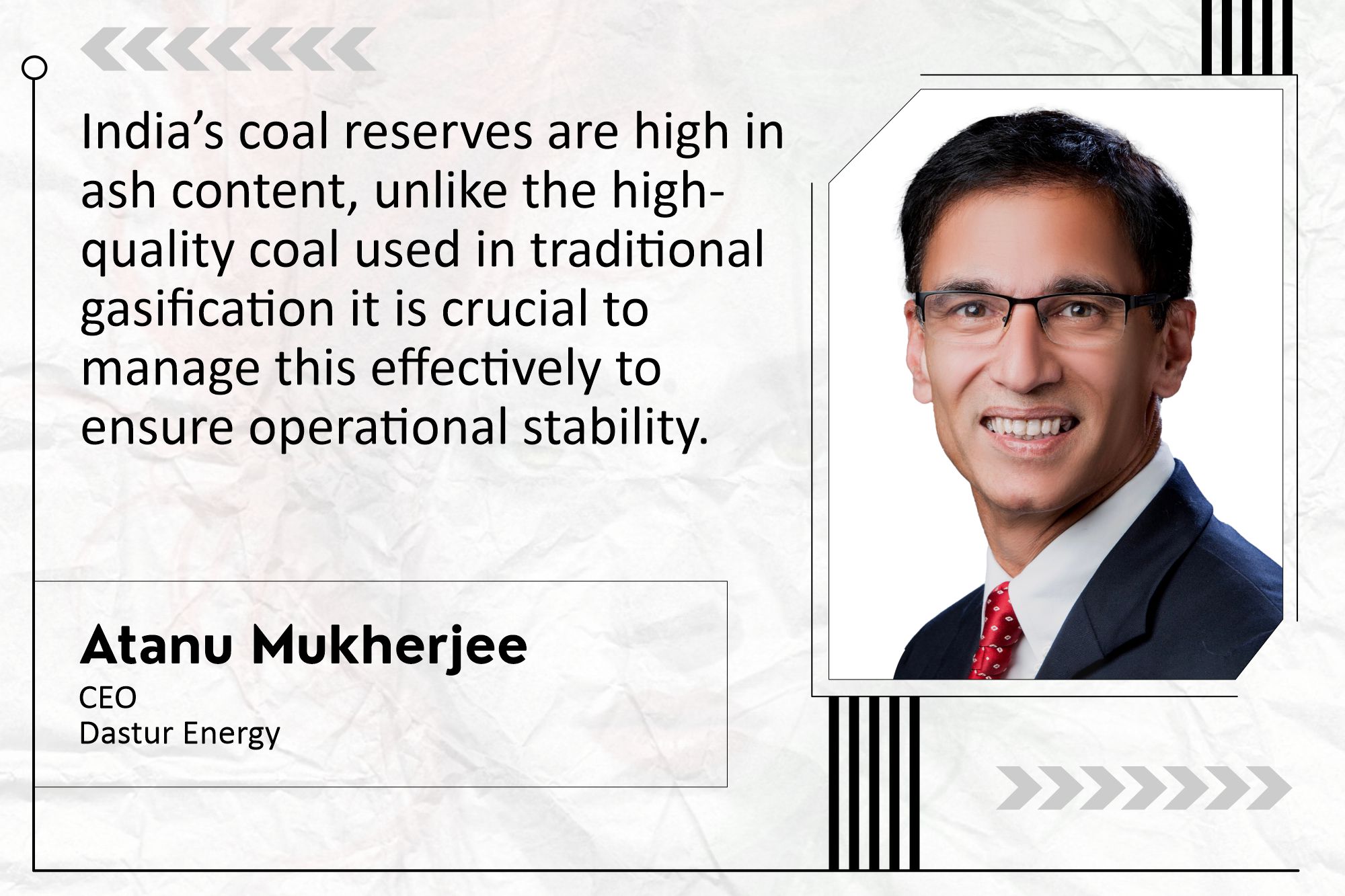Localising coal gasification tech key to reducing capital costs by 35-50 pc
By EPR Magazine Editorial March 26, 2025 8:48 pm IST
By EPR Magazine Editorial March 26, 2025 8:48 pm IST

With extensive global experience, including projects in the Middle East, Dastur Energy offers comprehensive solutions for plant design, operational efficiency and economic feasibility.
India stands at a pivotal point in its energy transition, with the opportunity to enhance energy access and ensure abundance. Balancing affordability and sustainability is key. India can establish a secure, efficient energy ecosystem while leveraging its expanding economy and growing consumer base while emerging as a global energy leader. Let us know more from Atanu Mukherjee.
What are the key technical and financial challenges in scaling up coal gasification efforts in India to meet the 110 MTPA target?
Scaling up coal gasification in India presents two primary challenges: feedstock management and scale of operations. India’s coal reserves are high in ash content, unlike the high-quality coal used in traditional gasification. Managing this effectively is crucial to ensure operational stability. Additionally, commercial viability requires large-scale plants with capacities of at least one million tons per annum. While government support through viability gap funding (VGF) of ₹8,000-₹8,500 crore has aided early adoption, long-term success will depend on overcoming technical and operational hurdles. Localising gasification technology is key to reducing capital costs by 35-50 percent, enhancing competitiveness. Dastur Energy has been a leading proponent of gasification in India, contributing to projects like JSPL’s gasification plant and collaborating with global technology providers to adapt solutions for Indian coal. The company supports ‘Make in India’ initiatives, focusing on technology adaptation, large-scale implementation, and cost optimisation. With extensive global experience, including projects in the Middle East, Dastur Energy offers comprehensive solutions for plant design, operational efficiency, and economic feasibility. Partnering with policymakers and industry stakeholders, the company is instrumental in shaping the gasification landscape in India, aiming to position the country as a global leader in coal gasification within the next decade.
How will forming the Carbon Capture Financing Corporation (CCFC) help lower the cost of CCUS deployment and attract global capital?
Dastur Energy has pioneered in advancing carbon capture systems in India, significantly contributing to developing the country’s carbon capture policy framework in collaboration with NITI Aayog in 2021-22. Now in its advanced stages, this policy is expected to be formalised soon. One of the primary challenges in carbon capture, utilisation and storage (CCUS) is cost management. To address this, the Carbon Capture Financing Corporation (CCFC) is proposed as a quasi-sovereign financial institution that will combine government support with international capital to reduce financing costs. By accessing green bonds and sovereign funds at low coupon rates, CCFC can lower the cost of CCUS deployment and provide financial support per ton of CO2 captured. This institutional mechanism will ensure funding is efficiently allocated to the most impactful projects, particularly large-scale initiatives like gasification, which offers low-cost capture potential. Dastur Energy’s expertise in carbon capture technologies, economic modelling, and policy advisory positions it as a key contributor to CCFC implementation. The company’s comprehensive approach to integrating technical, financial, and policy insights supports private enterprises and government agencies in accelerating CCUS adoption. Dastur Energy aims to drive energy transition to a low-carbon economy through its contributions, fostering long-term sustainability and global competitiveness.What are the major challenges in integrating renewables into the grid while maintaining energy affordability and stability for industries?
While renewables offer low-carbon energy, their variability and intermittency present operational challenges. Continuous, reliable power with 99.5 percent availability at competitive costs remains essential for industries and consumers. Sole reliance on renewables is impractical for base-load demand. Large-scale battery storage is costly and unlikely to be viable at scale soon. Instead, a balanced energy mix comprising gas-based power, coal with carbon capture, nuclear energy, hydropower and limited battery storage is necessary. Efficient grid infrastructure is also critical for transporting renewable energy from generation hubs to demand centres.
**************************************
We use cookies to personalize your experience. By continuing to visit this website you agree to our Terms & Conditions, Privacy Policy and Cookie Policy.